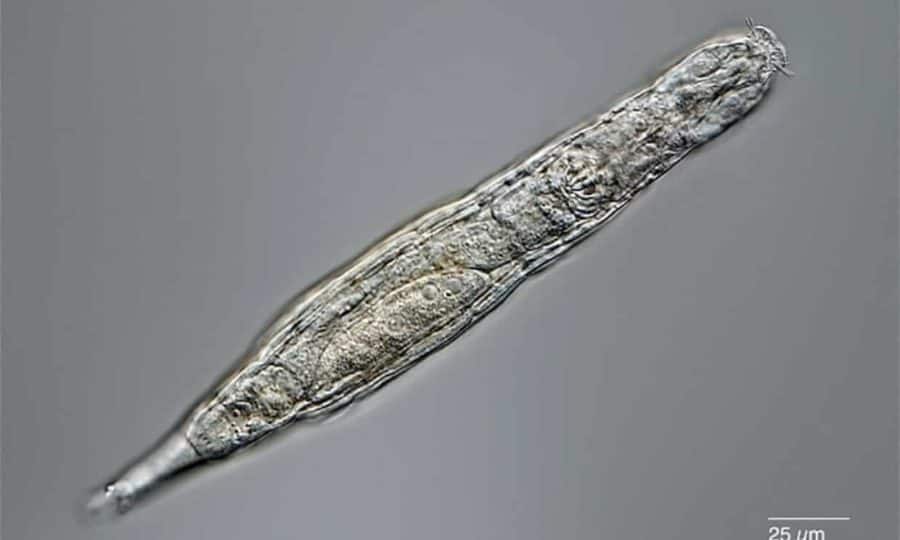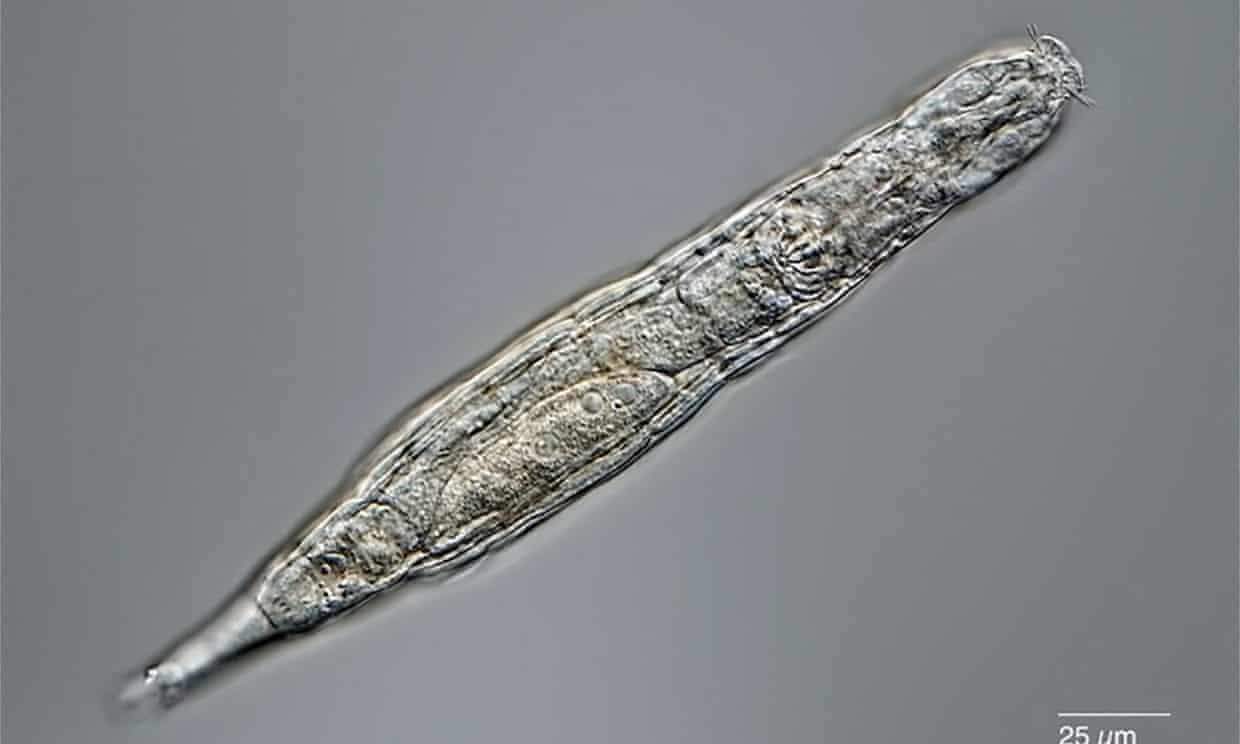Tiny specs of white
hidden underfoot,
rings of cilia lined up
to blow frozen kisses
against the earthy,
dirty glass.
Sawed.
Stored.
Thawed.
We break you from
your frigid tomb,
dissecting desiccation
with eager fingers
that graze the possibilities
of this discarded lifelessness.
This poem is inspired by recent research, which has successfully revived tiny 24,000-year-old microorganisms buried under Siberian permafrost.
Bdelloid rotifers are microscopic aquatic animals. They are easily recognised by their characteristic creeping like an inchworm or a leech, and in total there are over 450 discovered species. Bdelloids are distinguished from related groups of rotifers by the fact that they are exclusively female, reproducing via parthenogenesis (a cloning process by which embryos develop from unfertilised eggs), and also their ability to survive in dry, harsh environments by entering a state of cryptobiosis, a reversible state of life characterised by the ceasing of all metabolic processes, allowing survival for periods of intense adverse conditions.
The capacity for bdelloid rotifers to survive in a frozen state for up to a decade has long been known to scientists, but in this study, researchers were able to show that they can survive in a frozen state for much longer time periods. By collecting ice cores recovered from north-eastern Siberian permafrost, and then using radiocarbon dating techniques, researchers were able to identify bdelloid rotifers that were approximately 24,000 years old. Back in the lab, these ancient bdelloid rotifers were thawed, whereupon they functioned as usual, and continued to reproduce through parthenogenesis. This research serves as proof that multicellular animals could withstand tens of thousands of years in cryptobiosis, and while such technologies are still a long way from being a reality, this work presents an exceptional opportunity to investigate the basic foundations of long-term cryopreservation in a human context.
If our reporting has informed or inspired you, please consider making a donation. Every contribution, no matter the size, empowers us to continue delivering accurate, engaging, and trustworthy science and medical news. Independent journalism requires time, effort, and resources—your support ensures we can keep uncovering the stories that matter most to you.
Join us in making knowledge accessible and impactful. Thank you for standing with us!


